Table of contents
Meaning of the month of Orixás in Umbanda
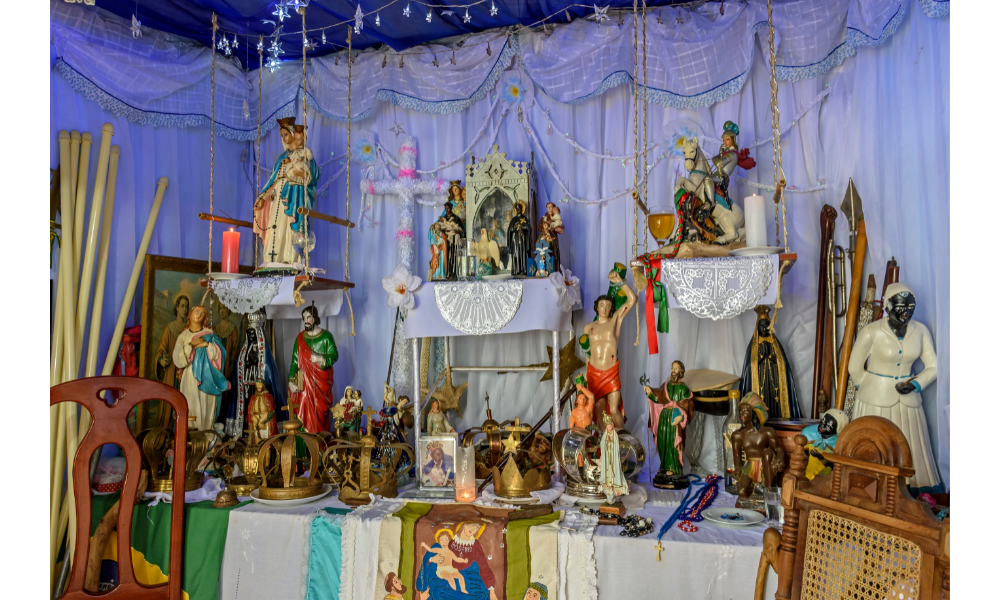
Umbanda believes that the Orixás are the representation of energy, of the force that comes from nature and that they can help human beings. For these reasons it is very important that the Orixás have specific days to be honored. Each one of them receives a different offering, a reference color and its own greeting.
As each of the Orixás receive their tributes on specific days, they must have a day to greet them. Thus, it avoids the confusion of the faithful and the forgetting of obligations. Below, know the day and month of each Orixá and what each one represents.
The Orixás
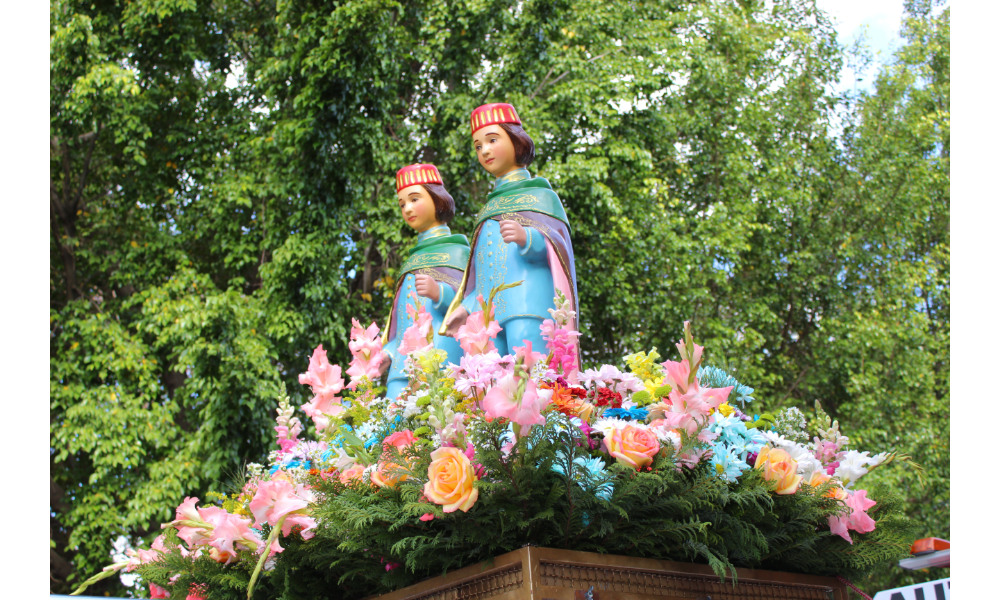
The Orixás are deities from Yoruba African mythology, which became popular in Brazil with the religions of African matrix, such as Umbanda and Candomblé. Yoruba is a region of Africa composed of various groups with similar ethnicities, language and cultures. Little is known, but many of the black people brought to Brazil as slaves were from this region.
There are more than 300 orixás in mythology, however some of them have become more famous in Brazil, such as Exu, Oxalá, Ogum, Oxóssi, Iemanjá, Xangô and Iansã. Each Orixá is represented in a different way and, moreover, they are very important to the religion of Umbanda. Below, learn why this importance and how these gods are seen in this religion.
What are the Orixás to Umbanda
Before speaking about the importance of the Orixás for Umbanda, it is necessary to understand what the word Umbanda means. This word originates from the Bantu language and has two meanings: the first is "place of worship", and the second is "priest".
According to Caboclo das Sete Encruzilhadas, the entity responsible for defining the basis of this religion, "Umbanda is the manifestation of the spirit for charity".
Umbanda is a monotheistic religion, that is, it believes in the existence of only one God. Below this God are the Orixás, the entities and the protective guides. Umbanda dwellers believe that the Orixás and the ancestral entities occupy another plane of existence. Furthermore, the orixás are considered ancient Yoruba divinities.
According to Yoruba mythology, Olodumaré is the supreme and inaccessible god. He created the world and the orixás to rule it and serve as intermediaries between him and humans. Unlike the orixás, Olodumaré does not accept offerings because he has control over everything and there is nothing he cannot do. The orixás represent the elements of nature, and Olodumaré is the junction of these energies.
Day and month of Orixás in Umbanda
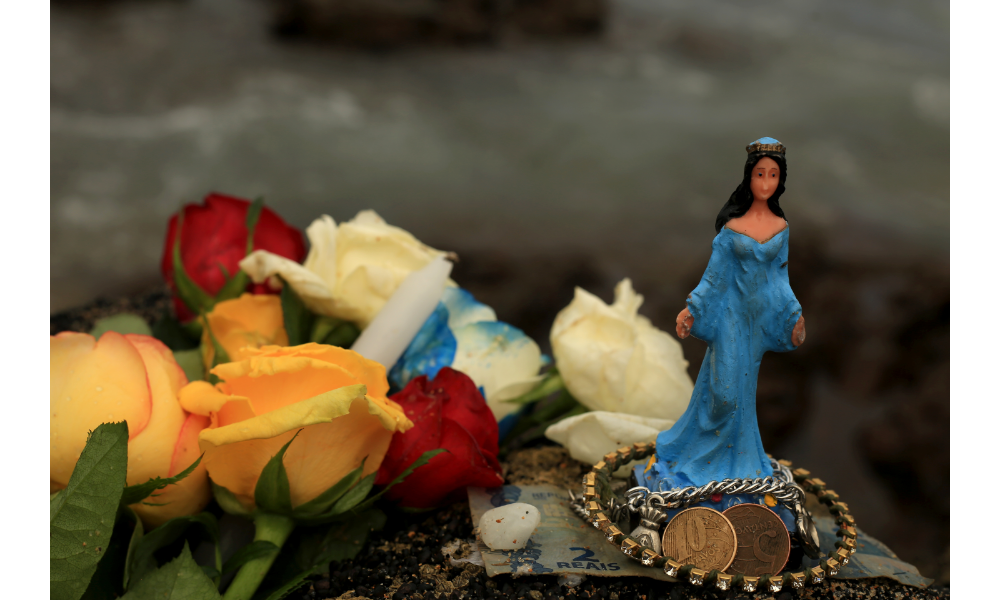
Although the religions of African origin are related to mysticism, it is common for people to associate the months of the orixás with their personalities since, just like us, human beings, the orixás also have their own characteristics. In addition, the gods can also influence our way of acting and thinking, depending on the days and ruling orixás.
That is why it is so important to know the months of the orixás. Thus, it is easier to distinguish one from another and, when it is necessary to please them, knowing the right month that each Orixá rules is essential. For this, continue reading the article until the end and discover the days and months of each Orixá in the Umbanda line.
Oxóssi day and month
Oxóssi, popularly known as the king of the forests, is celebrated in the month of January on the 20th and his day of the week is Thursday. As is well known, Oxóssi is connected to knowledge and nature. He is represented as a hunter and is characterized as a black man who is always with his bow and arrow in hand.
Ogum day and month
Ogum is a warrior orixá, known for his strength and courage. He is an orixá worshiped in both Umbanda and Candomblé. The date that this orixá is commemorated and celebrated is April 23rd, and his day of the week is Tuesday.
Ogum is characterized as a black man who wears blue or red clothes and always carries a sword in his hand. He is also seen riding his horse, which refers to Saint George, the saint of the Catholics.
Day and month of the Pretos-Velhos
In general, the pretos-velhos are known as evolved spirits. They are considered humble, wise and always willing to help. As many of them were slaves, they are celebrated on May 13, the date on which slavery was abolished.
Day and month of Saint Sara Kali
Santa Sara Kali is considered the patron saint of the gypsies. This saint is usually on the side of women who want to get pregnant, the exiles and the desperate. On 24 and 25 May is celebrated the day of Santa Sara.
Obá's day and month
Obá is celebrated on May 30. Her day of the week is Wednesday. Obá is a feminine orixá, known mainly for representing the rebellious waters of the rivers, the pororocas, the strong waters and the falls. She is also the lady of the whirlpools, and is always close to Nanã. Together, they have control over the floods and the mud.
Day and month of Xangô
Xangô is known for being the father of justice and truth. In addition, he can be represented as the god of fire, lightning and thunder. He is usually sought after to solve problems related to documents, studies and intellectual work. He receives offerings on Wednesdays and is celebrated mainly on June 29th.
Nanã-Buruquê day and month
The day to honor Nanã is July 26. Being an elder, Nanã has been present since the creation of humanity. She is the "Primordial Mother-Earth" of the grains and the dead. She is the memory of the people, as she experienced all the magic of the conception of the Universe. In addition, she is considered the lady of death, as she is responsible for the entrance and exit portals for souls.
Day and month of Obaluaiê
The day and month in which we honor Obaluaiê is the same month in which Catholics worship Saint Roque, August 16. In the week, Obaluaiê rules Mondays. This orixá is known for its mastery in the area of health, resilience and is always willing to protect their own against illness.
He is considered a strong and generous orixá. If you want to identify him, all you have to do is pay attention to his clothing, since he presents himself under a long garment made of straw.
Day and month of Oxumaré
During the week, Oxumaré usually rules Tuesdays, but the day to worship and honor this saint is August 24. Together with Oxum, Oxumaré forms the second line of Umbanda, that of love and conception. He represents continuous renewal in all aspects of human life. Furthermore, he is the orixá that radiates the seven colors of Umbanda.
Day and month of Cosme and Damian
Unlike the Catholic Church, Umbandists celebrate the day of São Cosme and Damião on September 27. Little is known, but Cosme and Damião were twin brothers, studied medicine and sought to help others through it. They are considered the orixás of children and, curiously, are children of Iansã and Xangô.
Oxum day and month
Mother of Sweet Waters and considered the most beautiful among the orixás, Oxum is celebrated on October 12. During the week, she is the ruler of Saturdays. Oxum was raised with much pampering, which is why she is characterized as the goddess of gold, prosperity and especially the goddess of love.
Omulu's day and month
In Umbanda, Omulu is considered a warrior and brave orixá. He is associated with earth and fire. He is the son of Nanã-Burukê, and was abandoned by her. Curiously, Omulu is the king of the mysteries of life and death and cannot be looked upon by men, for like the Sun and truth, he could blind them. August 16th is a day to honor him.
Umbanda Day
Just as there are days when the orixás are commemorated, Umbanda is also commemorated on a specific day. November 15 is considered the National Day of this religion. Umbanda was born in Brazil and, in its origin, unites characteristics from other religions, such as Catholicism, Spiritism and other religions of African and indigenous matrix.
Iansã day and month
Iansã's weekly day is every Saturday, but because of her love for Xangô, she can be celebrated on Wednesdays, while the day to worship and honor Iansã is December 4. A nationally known orisha for being the warrior goddess of the winds, lightning and storms, she commands the dead spirits with a horse tail, known as Eruexim - one of her symbols.
Iemanjá's day and month
The most popular among the Orixás and considered the queen of the sea, Iemanjá is celebrated on February 2. On the other hand, her weekly day is Saturday. Iemanjá is the daughter of Olokun, the orixá king of the oceans and so is known that way.
She is considered the mother of all adults and also of the Orixás. Normally, the faithful of almost all religions jump the 7 waves of this orixá at the end of the year in order to attract good luck.
Oxalá's day and month
The weekly day of Oxalá is Friday. On the other hand, the day when the orixá considered one of the most important in the Umbanda line is celebrated is January 15th. Oxalá is considered the god of white and peace. He is also associated with the creation of the world and the human species. Being one of the greatest in the Umbanda line, Oxalá is calm, tranquil and serene.
Which Orixás govern each sign
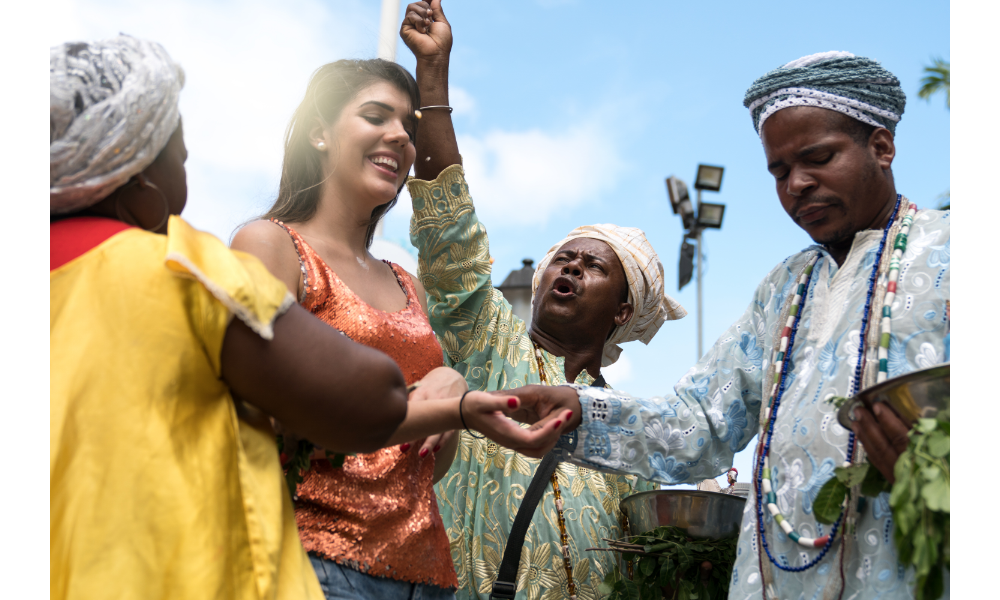
The Orixás are also responsible for the rulership of each sign. Thus, it is easier to associate their characteristics with those of their children. The African gods, besides being present in the daily life of their children, can also influence the way of acting and thinking of each one. Below, get to know which Orixá rules each sign, and find out which one is yours.
Aries Orixá
If you've ever wondered why your sign is considered one of the worst in the Zodiac, here's the answer: the ruling Orixá is Ogum. Considered the god of war, Ogum is authoritarian and people who are ruled by him are considered born leaders, since they have the ability to make decisions, besides having courage and self-confidence.
On the other hand, Aryans tend to be a little impulsive. They throw themselves into things and don't always think about the consequences. Ogum protects their paths, which makes them very active and willing to achieve their goals.
Taurus Orixà
The ruling Orixá of Taurus is Oxóssi, the Orixá of the forest and abundance. Oxóssi is patient, persistent and reliable. He has a generous heart, but his assumptions are inflexible. Taureans are usually known for their care, determination and intelligence. They run after what they want, although they are somewhat indecisive in situations that require definition.
Gemini Orixá
The Gemini Orixá is mainly eloquent, intelligent and communicative. He has a lot of energy and vitality, so his protégés do best in situations where they can express their opinions. The Orixás who govern this sign are the Ibejis. Having said this, it is possible to understand why Gemini people are so emotional and are always looking for new things.
Cancer Orixá
The orisha of Cancerians is the orisha of sweet waters, waterfalls and love. Oxum is emotional, sympathetic, affectionate and very protective. Cancerians tend to be sensitive and generous, as well as charming and subtle. They usually deal better with the public and like places where they feel more at ease.
Lion Orixá
Xangô is the Orixá who values justice and equilibrium. He gives the Leonine goodness, fidelity, creativity and enthusiasm. The father of truth likes, above all, to solve and decide any problem.
Sometimes he can seem overbearing and a bit bossy, but he is very kind and protective of those who are always by his side. It's a great trait of Leo's too.
Virgo Orixá
Orixá of healing, of research, of dedicated and meticulous work. The ruling Orixá of Virgoans is nothing else than Obaluaiê. He is modest, intelligent and a little shy. He has great analytical capacity and is usually a perfectionist.
You like things done as right as possible and will not tolerate being contradicted. Stubbornness is usually quite harmful.
Libra Orixá
Oxumaré is the entity that rules the Libyans. He possesses great beauty, which promotes harmony between earth and sky. Called and known as the lord of the rainbow, he is idealistic, peaceful, optimistic and romantic, but indecisive.
You are always open to dialogue when nerves are on edge, and you usually get along well with everyone and like to help others. Your protégés are also very charming, friendly, and admired by those closest to you.
Scorpio Orixá
Nanana is very creative, powerful and passionate. She brings to Scorpios an enormous dedication and attachment to detail. She is also very observant and confident, and is interested in matters related to health and sexuality. She is well known mainly for her strong and mysterious personality.
Sagittarius orisha
The orisha of the Sagittarians is known as the mistress of the winds and queen of lightning and storms. She is self-sufficient, free and in control of herself. She is also very sincere and optimistic. Her protégés are usually curious and are always willing to know and do new things. Iansã brings them intense emotions and does not let them be shaken by anything.
Capricorn Orixá
God of sickness and healing, Omulu rules Capricornians. This Orixà is determined and ambitious at the same time. He is also linked to studies and research. He has a somewhat individualistic way, but still generates confidence. Omulu knows how to deal with money and always looks for his best performance. Sometimes he is quite grumpy.
Aquarius Orixá
This Orixá is known as the father of creation and lord of peace. He is true, loyal, original and has a humanitarian sense. For the Aquarian, he confers the will to achieve his financial and professional freedom, and he battles for it. Oxalá is very creative and shows interest in study. He wears white and is always willing to take sides for peace.
Pisces Orixá
Interestingly, Yemanjá is the ruler of the "little fishes". She is considered the queen of the sea and oceans, that is, she rules all waters. She is sensitive, imaginative and dreamy. Because she is very intense, she lives with emotions at the top of her skin.
Like the Orixá, her protégés have unstable moods, but they are still generous and kind. She also gives them the delicacy and talent to love everything on Earth.
Should I perform rituals of obligation in the month of the Orixás in Umbanda?
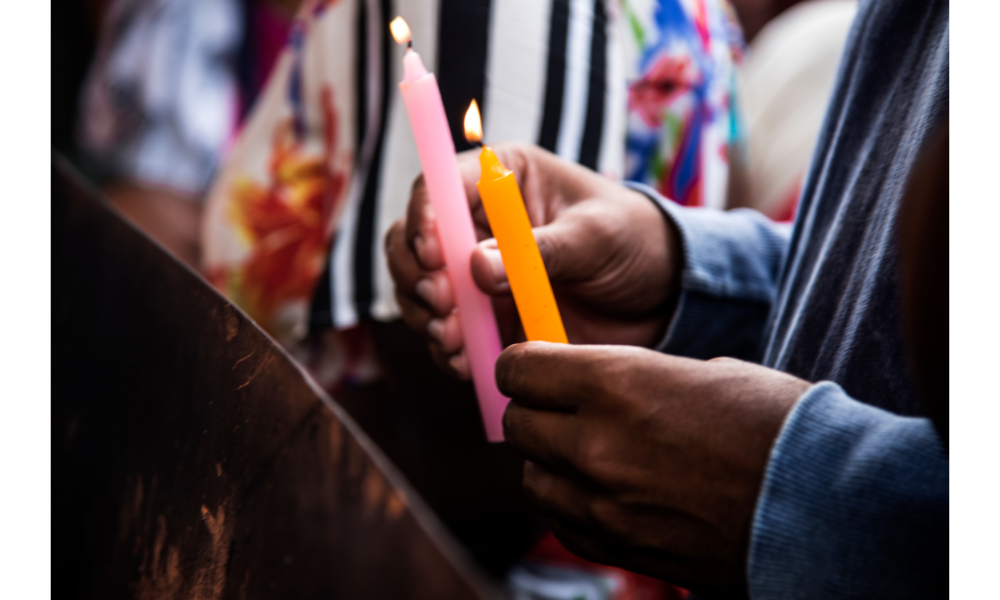
Although most people like to do the rituals in the months of the orixás, it is important to make clear that this is not a mandatory practice. In general, the rituals are done in order to give thanks for a grace or with the purpose of pleasing the ruling Orixá of each month. The children of each Orixá have the option of doing the rituals in the month in which their Head Father is ruling.
The intention of Umbanda is to let its children be free and have the freedom to come and go as they please, however, when a child takes responsibility in doing a ritual of obligation, it is important that he does it. In this way, he will be firming the connection he has with the Orixás and the exchange between them will be reciprocal.
So it is up to you whether you want to perform the ritual or not, but once you promised you would do it, fulfill your obligations. Faith and good will need to walk side by side, regardless of obligations. Umbanda does not want prisoners, remember that.

